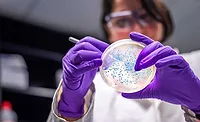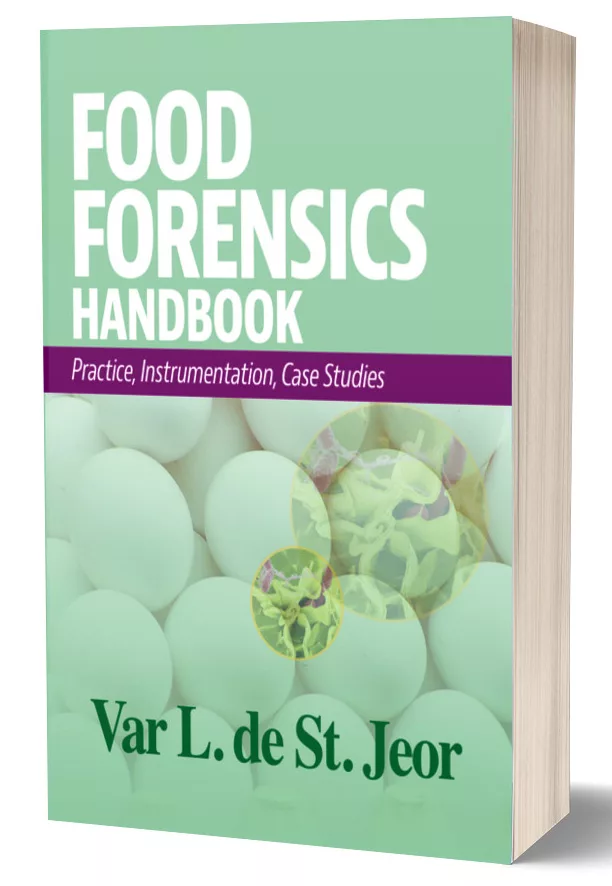Rapid Testing Methods—Processor Preferences
Which rapid microbiological test methods are preferred by food processors, and what attributes of rapid tests are most important to them?

Image credit: Sproetniek/E+ via Getty Images
Welcome to Part 2 of our three-part series on the use of rapid microbiological methods (RMM) in food safety testing. Part 1 can be read here.1 In this segment, we present a follow-up to what we learned from our survey of more than 250 food processors from around the world, conducted late last year.
As we mentioned in Part 1,1 there has been substantial growth in the development and use of rapid methods since their introduction to the market over the past 25 years or so. When these methods were first introduced, they were originally intended for use by food processors in their in-house laboratories. Over the past decade, however, fewer and fewer food companies have continued to maintain an in-house microbiology lab, mainly due to the concern for cross-contamination when working with pathogen samples. As revealed in Part 1,1 78 percent of the companies in our survey reported that they no longer have an in-house microbiology lab.
Use of Rapid Microbiological Methods
Readers of Food Safety Magazine will be familiar with the many formats of RMM that are widely used. In Part 1,1 we discussed the use of tests such as polymerase chain reaction (PCR), lateral flow immunoassay, enzyme-linked immunoassay (ELISA), automated bioburden testing, and similar instrument-based methods that are common in food safety. However, we wanted to hear more details about why these technologies are being used, the specific reasons why they are employed, the test features most valued by food processors, and the limitations for the use of such tests.
We first asked survey respondents, "Which rapid methods do you use or specify?" We specifically used the phrase "use or specify" because of the high degree of outsourcing. Few companies continue to host an in-house microbiology lab; nonetheless, they still control the demand for RMM formats if they specify the test(s) to be used by their commercial lab.
Not unexpectedly, respondents to our survey reported using PCR and instrument-based ELISA as two of the most commonly used test formats, and primarily for pathogen analysis (Figure 1). The survey also showed that about one in four companies use lateral flow immunoassay tests. These tests are commonly employed as part of a company's environmental monitoring program and to guide their sanitation and cleaning programs as part of their product changeovers on production lines. Companies also reported that they use rapid indicator swabs—protein swabs, rapid bacteria growth indicator swabs, and similar tests for cleaning verification and to speed up the product changeover processes. A similar number of companies report using rapid bioburden tests—which characterize the presence of microorganisms using ATP, monitoring of CO2, enzymatic color change, and other indicators of microbial growth—primarily for product release testing. Only a few companies reported using "other" tests, including varying types of specific indicator tests with colorimetric detection and other, similar rapid formats.
One quality assurance/quality control manager at a spice company mentioned, "We use a number of rapid test swabs to guide our cleaning and product changeover processes. It is the only way we can get the fast data that we need to keep the lines running. We don't hold much inventory, so we cannot afford any downtime. We have looked at bringing a lab back into the production building to use other, more traditional methods and still get the results quickly, and we have a proposal in to management to do just that. However, we have also learned that even if we decide to build a lab and bring testing back in-house, we have not been able to find experienced, qualified people to work in the lab, so that project has been postponed and the rapid swabs remain our best option."
Also, as expected, a high volume of companies reported using ATP tests. Over the past 20 years, ATP tests have become commonplace for use in cleaning verification in food and beverage plants. We find it is typical that about 70–80 percent of food companies in North America and Europe use ATP. The level of the intensity of ATP testing (as measured by the number of tests per week conducted) is also highest in North America and Western Europe. The proportion of plants using ATP and the intensity of testing varies widely in other world regions depending the country, the product being produced, the level of exports, and other factors, and this can be seen in the difference of reported use in this survey.
Looking for quick answers on food safety topics?
Try Ask FSM, our new smart AI search tool.
Ask FSM →
Aside from the question of which tests are being used, the question of why RMM are being used is of equal or greater importance. Again, not unexpectedly, the main reason that processors choose rapid methods is that they produce "faster results" (Figure 2).
This reason, however, has evolved over the past 20 years or so since RMM have become more common. Early in their adoption, RMM were employed at in-plant microbiology labs to produce faster results for product release testing, especially faster results for the presence of pathogens. Since decisions to ship product were held pending lab results, faster results meant faster and more efficient logistics and less need for finished product inventory and storage. However, with a large volume of pathogen tests now being outsourced to commercial labs, food companies who use RMM are less solely driven by the "need for speed" for product release, as the analytical turnaround time for these tests is now the responsibility of their commercial lab partners.
RMM are now more commonly used for internal operational decisions. Of the survey respondents, 33 percent of those within the U.S. and 45 percent of those outside of the U.S. said that their need for faster results from the use of RMM in-plant was mainly driven by product changeovers and decisions regarding their environmental or sanitation program. As several mentioned in their responses to our survey, "…faster results allow for faster decision-making, especially decisions based on real-time results." This means that the test not only needs to be fast, but also easy to use, because these tests will be used in-house, often by individuals who are not lab analysts and who may have little or no microbiological testing experience. This is also reflected in our survey results, with "ease of use" being a key acceptance factor.
We also wanted to look at the importance of these test attributes in a different way, by asking processors to not just indicate which test attributes they consider important, but also asking them to rank them in order of importance (Figure 3). In this ranking, it is no surprise that speed and results turnaround time (TAT) and ease of use are number one and number two in importance.
The third most-important criteria is the accreditation or performance validation the test carries. While it is understood that many of the tests may not be as accurate, or have the selectivity, specificity, level of detection or other, similar analytical characteristics as laboratory-based reference methods, they nonetheless need to be accurate and reliable, at least to a level that makes them useful in the application in which they will be employed. This validation typically comes from third-party validation organizations (e.g., AOAC, AFNOR, MicroVal, NordVal, etc.) and can be considered as a "must have" for most of these tests.
The fourth-ranked factor, price, is seen as being less important. This makes sense, because if price were a primary factor in the test selection decision, there are less expensive lab-based tests available, but they are slower and more labor-intensive. Food companies are clearly saying that rapid turnaround time and the ability to employ the test on the production floor is worth the price premium.
In the next Food Safety Insights column, we will continue to explore this topic with more details on where RMM may go next. We will consider questions such as, "How fast is fast?" and "Could even faster tests be attractive to food processors, or have the benefits of faster results hit a plateau?" We will also consider whether RMM technology will evolve to the point where it may be acceptable to bring the analysis back to an in-plant lab.
We will answer those questions and more in Part 3 of this series, to be published in the April/May issue.
References
- Ferguson, Bob. "Rapid Testing Methods—Still a Necessary Part of Food Safety?" Food Safety Magazine December 2023/January 2024. https://www.food-safety.com/articles/9108-rapid-testing-methodsstill-a-necessary-part-of-food-safety.
Bob Ferguson is President of Strategic Consulting Inc. and can be reached at bobferguson9806@gmail.com or on X/Twitter at @SCI_Ferguson.









